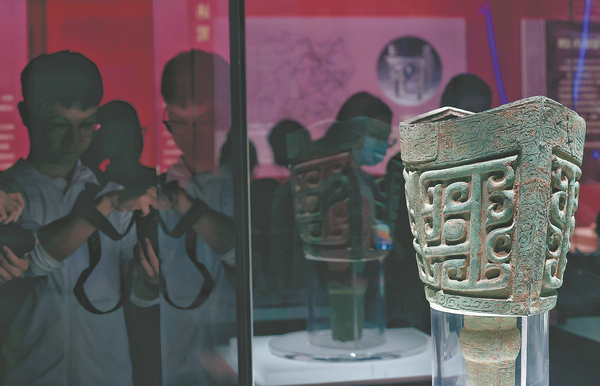Exhibition highlights unique origins

Nurtured by the Same Water, Bronze Age Civilizations in the Yangtze River Basin at Guangdong Museum is the first such exhibition held in Guangdong province to showcase the Bronze Age civilizations in the Yangtze River Basin. It displays 137 rare exhibits from the region. ZHENG ERQI/CHINA DAILY
During the Warring States Period (475-221 BC), there were constant disputes among feudal states, and the power of various states grew and waned.
At that time, Qin and Chu were both powerful states and their regional cultures had a very important impact on the development of Chinese civilization.
In the Yangtze River Basin, the influence of Chu culture is particularly prominent.
In 316 BC, Qin conquered Ba and Shu, greatly changing the geopolitical landscape of the late Warring States Period.
Consequently, the dominant trends of Chu culture in the Yangtze River Basin changed accordingly.
With the destruction of the six states by the Qin state, and the subsequent unification of the country, the Bronze Age civilizations of the Yangtze River Basin, which had been in turmoil for thousands of years, merged with main civilizations of China.
The Yangtze River, the longest in China — and the longest in the world to run through a single country — originates from the Qinghai-Tibet Plateau and bisects the entire nation before meeting the East China Sea. The Yangtze River Basin has the most abundant copper resources in China, leading to the rise of Bronze Age civilizations and cultures.
